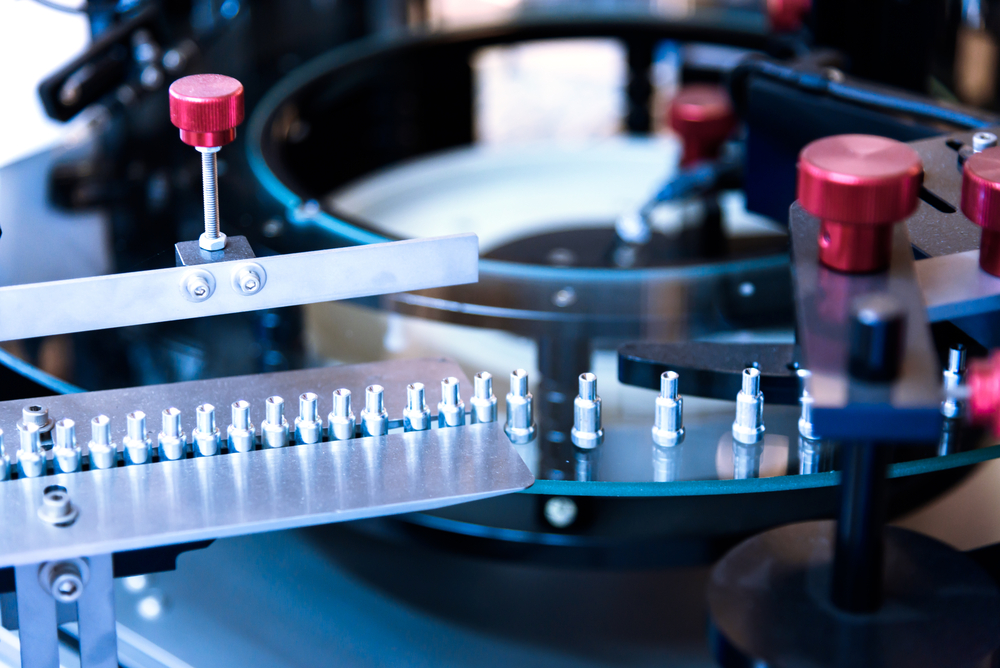When preparing to release a new product to market, or when scaling up manufacturing for an existing product, manufacturers are looking for a balance of low cost and high quality. More volume means lower cost when you work with contract manufacturers. How and where a product is manufactured also influences the cost.
There are many considerations in choosing high volume vs. low volume manufacturing. Additive manufacturing offers a viable option for any volume. It also enables manufacturers to implement a more agile business model with less risk. Here’s how additive manufacturing is reducing the gap between high volume vs. low volume manufacturing.

High Volume vs. Low Volume Manufacturing
A comparison of high volume and low volume traditional manufacturing and additive manufacturing is summarized in the table below.
| High Volume Traditional | Low Volume Traditional | Additive / 3D Printing | |
| Tooling | Custom hardened steel tooling that can be very complex | Custom aluminum or pre-hardened steel tooling with a wide range in complexity | No custom tooling needed and 3D printing machines are highly adaptable |
| Throughput | High | Low to moderate and that is dependent on the tooling | Depends on product dimensions, printing direction, and amount of 3D printing material required for the product |
| Production location | Often done overseas (Southeast Asia) | Overseas or local | More location flexibility with greater automation and no tooling, such as closer to end-customer or assembly facility |
| Cost structure | High CAPEX costs amortized across production volume | High CAPEX costs amortized across a lower production volume | With no tooling, there are lower CAPEX costs. The final product can be cost-effective if there is also no assembly |
| MOQ | High | Moderate | As low as 1 unit |
| Product mix | Requires all SKUs be very similar, and have minimal variation in shape, and color | Same as high volume | Can print one SKU, or a high mix of low volume SKUs |
| Assembly | Design requires significant adaptation to reduce or automate the assembly | Same as high volume | Generally requires fewer or eliminates assembly steps |
3D printing can support any volume, as well as a mix of SKUs on a single production line. With the elimination of custom tooling, 3D printing solutions are changing manufacturing from capital intensive, single-purpose sites to agile and more automated production centers.
Why Use 3D Printing for High Volume and Low Volume Manufacturing?
3D printing is adaptable to high volume and low volume manufacturing and reduces the CAPEX investment for scaling associated with traditional processes. Companies can also use a high mix, low volume production strategy to increase throughput. 3D printing allows manufacturers to change their business model in the following ways:
- On-demand printing and shipping. 3D printing systems directly print from digital models allowing orders to go immediately into production as long as there is a qualified design. Companies that use 3D printing can eliminate excess inventory by printing orders on-demand.
- Agility. Eliminating custom tooling accelerates the manufacturing of new and revised designs. Modifications can be made to the digital design and the product is immediately reprinted.
- High SKU mix. There are often efficiency gains in manufacturing with increasing volume. 3D printing does not need custom tooling for each product enabling the manufacturing of a broad range of products with the same equipment. The flexibility allows sites to support a combination of multiple products or SKUs, increasing manufacturing volume.
- Consolidate parts. 3D printing can manufacture complex products, allowing consolidation of sub-parts and eliminating assembly steps typically required for injection molding. Streamlining manufacturing can make 3D printing cost-competitive with injection molding.
- Print closer to the customer. With greater manufacturing automation, there is greater flexibility on where 3D printing operations are located. Additive manufacturing sites can be set up in high labor cost regions that are closer to the end customer, reducing logistics costs, and speeding up product delivery.
For information on how LuxCreo products and services can improve your supply chain and manufacturing processes, visit our contact page or call (650) 336-0888.
